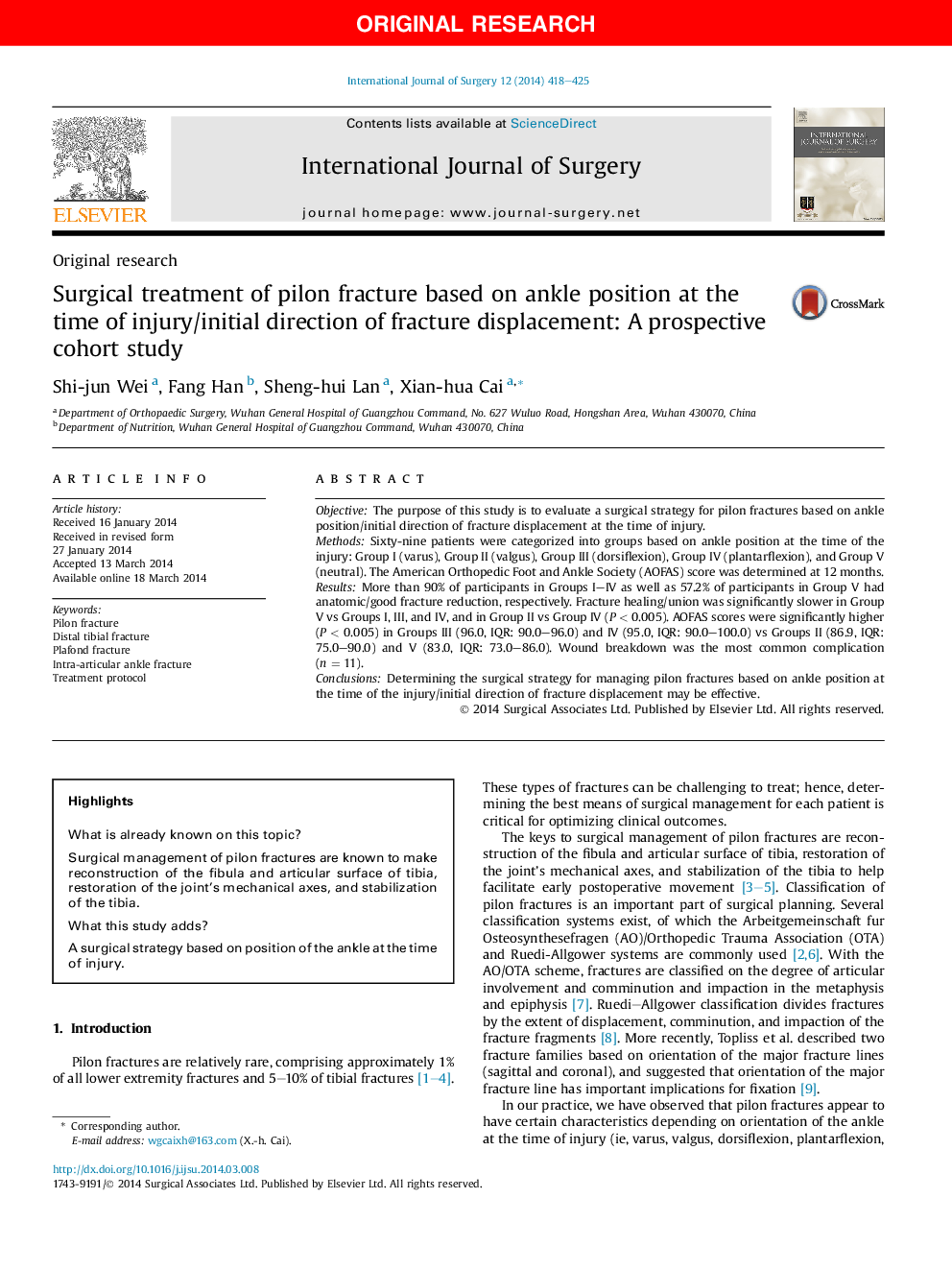| Article ID | Journal | Published Year | Pages | File Type |
|---|---|---|---|---|
| 4285939 | International Journal of Surgery | 2014 | 8 Pages |
ObjectiveThe purpose of this study is to evaluate a surgical strategy for pilon fractures based on ankle position/initial direction of fracture displacement at the time of injury.MethodsSixty-nine patients were categorized into groups based on ankle position at the time of the injury: Group I (varus), Group II (valgus), Group III (dorsiflexion), Group IV (plantarflexion), and Group V (neutral). The American Orthopedic Foot and Ankle Society (AOFAS) score was determined at 12 months.ResultsMore than 90% of participants in Groups I–IV as well as 57.2% of participants in Group V had anatomic/good fracture reduction, respectively. Fracture healing/union was significantly slower in Group V vs Groups I, III, and IV, and in Group II vs Group IV (P < 0.005). AOFAS scores were significantly higher (P < 0.005) in Groups III (96.0, IQR: 90.0–96.0) and IV (95.0, IQR: 90.0–100.0) vs Groups II (86.9, IQR: 75.0–90.0) and V (83.0, IQR: 73.0–86.0). Wound breakdown was the most common complication (n = 11).ConclusionsDetermining the surgical strategy for managing pilon fractures based on ankle position at the time of the injury/initial direction of fracture displacement may be effective.
